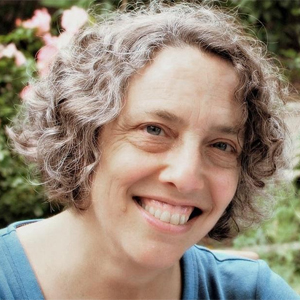Feb 19, 2020 By: yunews
 Jacqueline Osherow
Jacqueline OsherowMaybe it was just for this that God pulled water from dry land: to rescue hoodoo after hoodoo. That’s what they’re called—
a bastardization of voodoo— these unrepeatable needles of rock, geology’s answer to flakes of snow.
A sound enough hypothesis: dark magic. But I like God’s approach—so straightforward: the light, the land, the sky, each feat of handiwork
a matter of a single uttered word (that’s the first version; the clumsy second was more hand’s on, with dust and ribs required)
though it’s a stretch to claim this place was planned. Maybe, just like us, God was stupefied; He rarely knew how any day would end,
had to see things finished to call them good….
In a commentary about writing the poem, she said that it “turned out to be an expansive experience, enabling me to talk about the Bible, the ways we see and understand our world, the notion of geological time, the interactions between art and science.” At a Q&A, students asked Osherow a number of questions about her writing process. One wanted to know which came first for her, the image or the idea. “Depends,” said Osherow. “A lot of my poems are about visual images, and so the image might come first. But sometimes I’m trying to make a connection to something I’ve heard or seen and will start with that. So, it depends.” Another question about colors and places in her work elicited an answer about traveling in the world. “I love writing about places, but never in the place where I am. You’ve been somewhere, but it’s what you remember about the place that’s going to make its way into a poem, because for me, what’s interesting is what stays with me about a place.” Questioned about her writing process, she said “it’s ninety-nine-point-nine-percent revision. It’s mostly revising, revising, revising, revising—largely cutting, though you sometimes need to add as well.” A student wanted to know what texts and writers inspire her. “King David—I love the Psalms, a gigantic inspiration. I fell I love with Emily Dickinson but I also love nursery rhymes, a Child’s Garden of Verses, Gerard Manley Hopkins, Keats, Yeats, Coleridge. If you’re interested in poetry, get yourself a copy of the Norton Anthology of Poetry and read around in it, and when you find what you really like, go to the library and get out the whole book. And not just in English—it’s very good to read poetry in other languages because it sets you thinking about ways of expressing things.” The audio of her presentation can be found here, and more of her poetry can be found online. A close reader of her texts will see how she seeks connections between different ways of understanding the Earth and shares those connections with her readers.